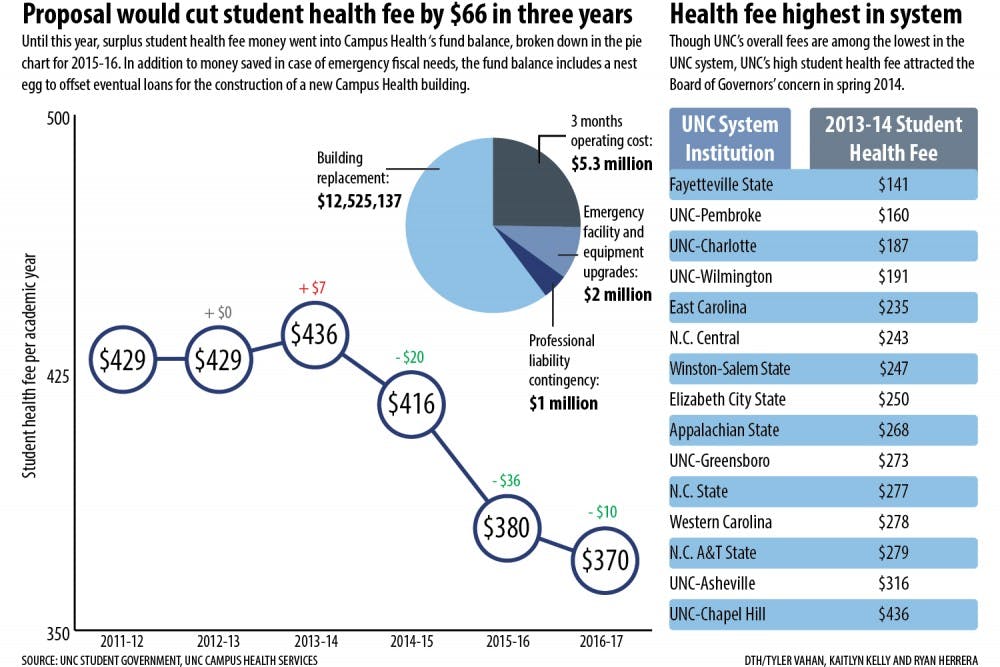On Friday, the Student Fee Advisory Subcommittee approved a proposal to slash another $36 from the fee next year and $10 more in 2016-17. Proposed cuts to the fee total $66 in three years.
UNC’s health fee — $416 for the 2014-15 academic year — is still the highest in the UNC system. UNC’s overall fees are low compared to the rest of the system.
“We have been committed to providing great access to our students, and the number of students served is very important to us and as close to a value metric as we have in college health,” said Executive Director of Campus Health Services Mary Covington.
She said no other UNC-system health center is open from 8 a.m. to 5 p.m. on the weekend.
Both the size of the fee and the content of the programming it paid for drew concern from the Board of Governors during its annual review of fees in February, member Steven Long said.
The University responded to the board’s concerns with a $20 cut and by shifting certain programs related to sexual health and diversity — including Interactive Theater Carolina — to other funding sources.
“We’re not cutting these programs. We haven’t cut a single piece out of any of these programs. We’re just paying for them from a different source,” said Crisp, the vice chancellor for student affairs.
Crisp said student affairs has three income sources: state-appropriated money and student fees, which both come with restrictions on how they can be spent, and revenue, primarily from housing, which is unrestricted.




